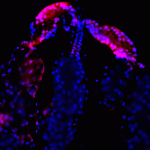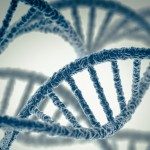About
Host-associated microbes, collectively known as the host microbiota, have manifold effects on host biology. Like other animals, insects establish various symbiotic associations with their microbial communities that shape their individual phenotype and fitness. In particular, the native gut bacteria of insect vectors were recently shown to modulate their susceptibility to human pathogens. Compared to vertebrates, insects tend to have less diverse but potentially more labile gut microbial associations. In mosquitoes, considerable variation in bacterial taxa observed in the gut of field-collected adults compared to laboratory-reared individuals suggests a strong influence of the environment. Therefore, diversity of the gut bacteria of mosquitoes could mediate an environmental influence on vector-borne pathogen transmission.
This project will investigate how habitat-related gut bacteria influence vectorial capacity of the mosquito Aedes aegypti, a major vector of dengue, Zika, yellow fever and chikungunya viruses. We hypothesize that gut bacterial diversity and community structure drive variation in Ae. aegypti vectorial capacity for arboviruses. To test this hypothesis, we will take advantage of the co-existence in Sub-Saharan Africa of a ‘sylvatic’ ecotype of Ae. aegypti found in forested habitats, ecologically similar to the ancestral form of the species, and the human-adapted ‘domestic’ ecotype that thrives in urbanized environments. Sylvatic and domestic larval breeding sites will be used as the source of contrasted bacterial communities to which mosquitoes are naturally exposed. In a pilot study, we observed that the composition of bacterial communities differed significantly between sylvatic and domestic larval breeding sites. We expect that mosquitoes respond differentially at the physiological level to the presence of distinct bacterial communities during larval development, which has consequences on adult life history traits and therefore vectorial capacity.
The proposed approach combines fieldwork in Senegal (Task 1), analyses of bacterial diversity by culture-dependent (isolation) and culture-independent (metataxogenomics and metatranscriptomics) methods (Task 2), and functional assays in vivo (Task 3). We will characterize the bacterial microbiota and microbiome in mosquito midguts from larvae and adult females and in the water of larval breeding sites. We will select relevant bacterial isolates from each mosquito ecotype to generate mono- and poly-associated gnotobiotic mosquitoes in the laboratory by contaminating axenic (bacteria-free) larvae derived from field-collected mosquitoes. Isolates will be prioritized according to a set of criteria including ecological distribution, prevalence, abundance and known biological properties. We will compare life history (age at pupation, adult body size, survival, fecundity), physiological (immune responses, vector competence), and behavioral (host preference) traits in gnotobiotic mosquitoes.
This interdisciplinary project will provide novel information on the link between ecology, symbiotic gut bacteria and vectorial capacity of mosquitoes. The novelty of our approach is to examine the diversity of symbiotic gut bacterial communities as a driver of natural variation in vectorial capacity, using a combination of descriptive and experimental methods. This project will address a major knowledge gap that exists between simplified model systems that study the mechanistic basis of vector-virus interactions in the laboratory and the complexity of natural ecosystems.





